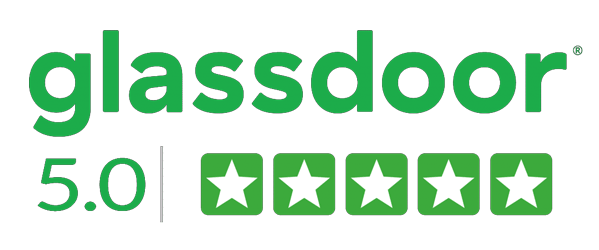
Attracting top talents to join your organisation is vital in empowering your departments with all the success factors required to achieve the company’s goals. After managing to source and hire qualified talents, you need to maintain and retain them for the long term.
What Is Employee Retention?
Employee retention is keeping productive and talented employees satisfied. Once employees feel appreciated, they will want to stay in the organization and grow their careers. Maintaining a positive work atmosphere will reduce turnover rates as well.
Why Do We Need to Keep the Same Employee for the Longest Period?
After all, you will not be able to achieve much if you hire the best calibres and then lose them to your competitors. That is why developing well-crafted retention strategies for employees is crucial to the success of your business.
Employee retention strategies are required in 2023 more than ever. With unprecedented market shifts and uncertainties, you need to keep your top talents growing stronger during this aggressive economy.
How To Keep My Employee Retention Rates High
- Create a Career Development Path.
- Notice and Celebrate Employee’s Performance.
- Asses Benefit Package and Compensation.
- Consider a Fair Work-Life Balance.
- Adopt Flexible Work Culture.
- Support Team Building Activities.
- Point out the Higher Goals of the Company.
- Consider Culture Fit Candidates.
- Encourage Diversity.
- Understand the Motive for Leaving.
There are various methods to retain employees such as providing competitive salaries and benefits, encouraging a healthy work-life balance and offering flexibility.
1-Create a Career Development Path
Your organization should prioritize having a clear path for promotions and career development for all employees. If employees are offered a chance to learn more, they will more likely work harder and feel satisfied.
Investing in your employees’ careers shows your initiative and appreciation for their work and effort. Recruiters should communicate early the career path they candidates can expect when they join the company.
Conducting regular training for employees and making sure they learn the latest technologies will drastically reduce any chances of turnover or burnout. Employees seek to change jobs if they feel they are not making a difference in their careers. HR can run regular surveys across your employees offering them to choose a certain skill or a technology they need to learn.
2-Notice and Celebrate Employee’s Performance
The appraisal should be a frequent action and should be communicated to each one who exceeds their KPIs and targets. Appraisal emails that celebrate and encourage employee performance would be better sent to all the employees as references for noticing and appraising good work. This will add positive peer pressure for everyone to exceed their targets and execute more effort to prove they are worthy of recognition as well.
3-Asses Benefit Package and Compensation to ensure employee retention
HR benchmarking is key to finding the best and most competitive benefits packages in the market. Collaborating with an HR agency can help you define the best practices and benchmarking in your industry.
Understanding how organizations appreciate their employees and attract new talents through benefits and compensation can help you offer the best package for new candidates to retain them in the long run and this will return positively on their productivity.
Following a clear and competitive compensation scheme is a motive for all teams to achieve their targets. If employees have a clear vision of the compensation scheme and what is required to earn their bonus, they will work harder and feel appreciated.
4-Consider a Fair Work-Life Balance
Work-life balance should be the company’s culture. It doesn’t stop at offering remote work flexibility or hybrid working policies, it should be a culture and approach for every aspect of the workflow.
If employees are motivated, they will do their best to complete all their tasks. There would not be a reason for an overload of work to be required after working hours. Managers should delegate tasks knowing ahead of what other assigned tasks the team members already have.
Automating a large part of work can reduce a lot of hours spent on repeating tasks. You need to monitor meetings and reduce any unnecessary meetings to save time and effort. It is easy to get carried away with managing the workflow, however, it would be better to focus on achieving the goals of the organization and prioritizing the work-life balance of their employees at the same time.
5-Adopt Flexible Work Culture encouraging the employee retention
It is becoming common to implement remote and hybrid working cultures and policies. Employees now seek a more flexible working environment as a factor to decide which company to join. If your organization is not implementing a work-from-home policy, you will miss a lot of chances to attract the right top talents as they may prefer another working place that offers flexibility.
Flexibility encourages employees to be more productive as they can focus only on carrying out their tasks. They will save a lot of time and effort on commuting and relocation. Once you adopt a flexible working culture, it is time to moderate online meetings as they will be the main communication channel across teams.
As discussed earlier, it is better to reduce any extra meetings to maintain a work-life balance rather than spend time discussing topics that would have been communicated in emails.
6-Support Team Building Activities
It is crucial to constantly focus on building the spirit of teamwork across your employees. Moreover, team-building activities are more important for a flexible environment to support a positive connection between team members even if they are working remotely.
7-Point out the Higher Goals of the Company
Employees will feel attached to the company if they understand the goals of their work and it impacts the progress of the company. You should not feel it is enough to share personal goals with each employee. They will find purpose in their work.
8-Consider Culture Fit Candidates
Everyone has their preference to carry out their work. While there is not a single method to do your job, each company has a culture that wouldn’t suit everyone. Highlighting the culture of your company and finding talents that fit into it ensures that all employees will feel they are in the right place.
9-Encourage Diversity
A diverse team is key to welcoming all employees regardless of their background or personal choices. Diversity depends on assessing employees regarding their skills and experiences rather than unrelated features that don’t change their ability to do their job.
10-Understand the Motive for Leaving
Studying the reasons behind the employees’ desire to leave their job can help you notice areas of improvement that your HR will need to work on. The exit interview is crucial to point out these factors that you might not be aware of in your organization. You can then tackle each point and create an action plan for it.
The Conclusion
Taking extra steps to ensure the satisfaction of employees through strong retention strategies. It takes less time, effort, and cost to retain your loyal and qualified team members than to recruit new candidates. Your HR partner can help devise the best retention strategies that they can deploy across your teams to guarantee everyone is satisfied and peaceful towards their work.


